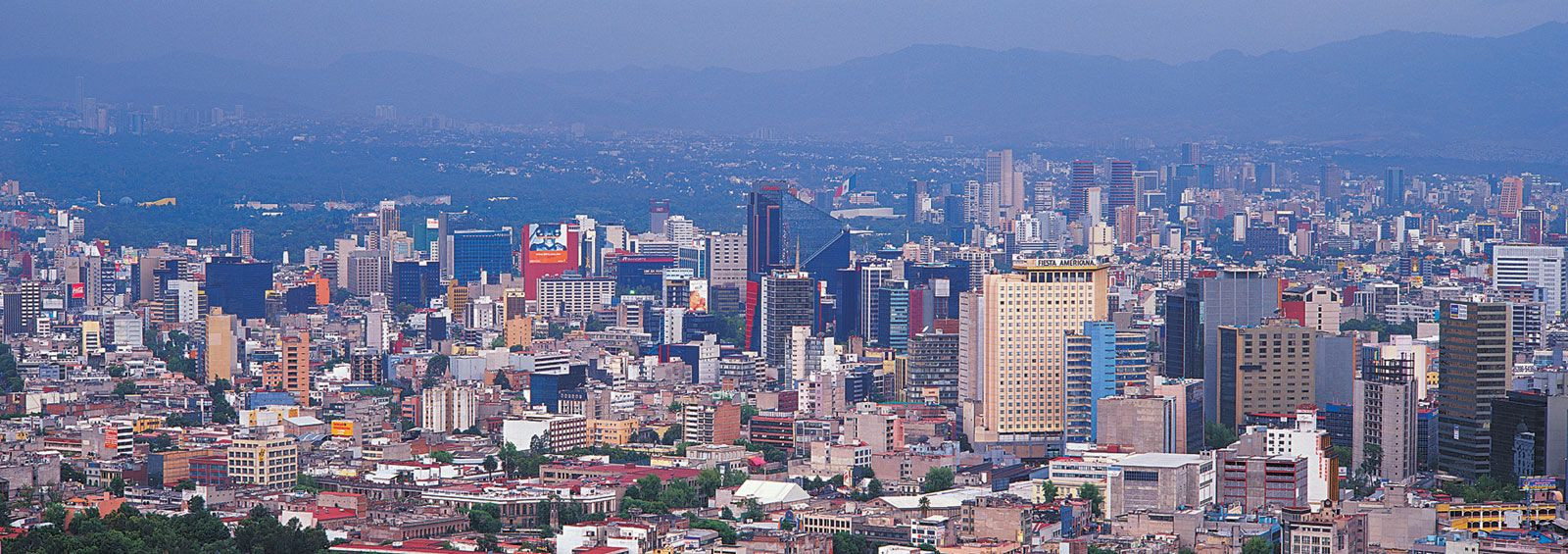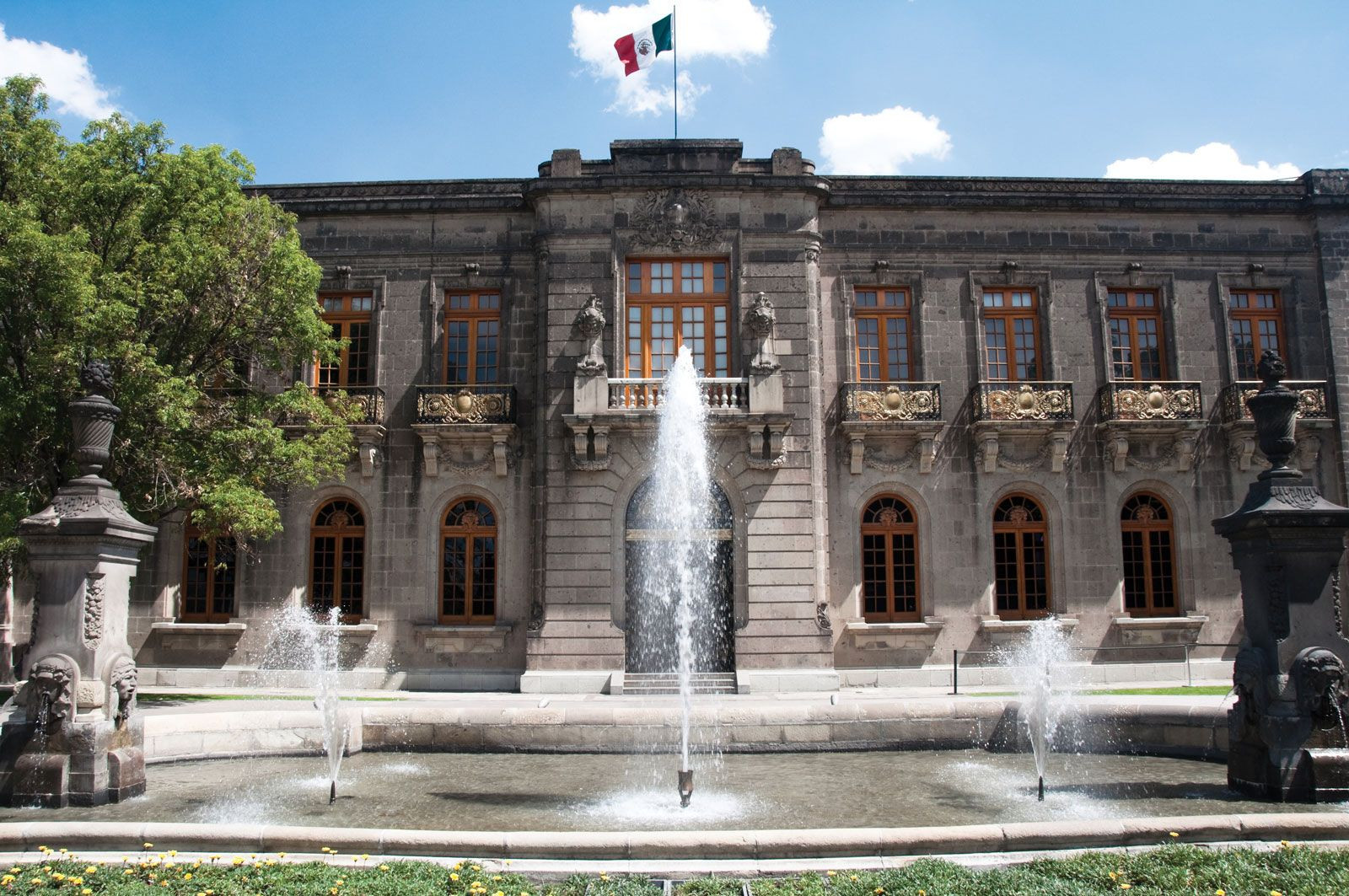Mexico City, the pulsating heart of the nation, stands as a monumental metropolis, rich in history and brimming with modern dynamism. More than just a sprawling urban center, it is the Capital Of Mexico, a title that encapsulates its profound political, cultural, and economic significance. Often referred to as Ciudad de México (CDMX), this megacity is not only the core of the country but also a crucial hub in North America, drawing visitors and attention from across the globe. Understanding Mexico City means understanding the essence of Mexico itself.
 Panoramic view of central Mexico City.
Panoramic view of central Mexico City.
What Makes Mexico City the Undisputed Capital?
Mexico City’s claim as the capital of Mexico is deeply rooted in its historical trajectory and geographical advantages. Its story begins long before the Spanish conquistadors arrived. Originally, the Aztec capital of Tenochtitlán thrived on islands within Lake Texcoco. This strategic location, in the Valley of Mexico, offered fertile lands and natural defenses, making it a central point for trade and power in pre-Hispanic Mesoamerica.
When Hernán Cortés and his forces razed Tenochtitlán in 1521, they consciously chose to rebuild their colonial capital, Mexico City, upon the very same site. This act was symbolic, establishing continuity and dominance. The new capital of New Spain, as it was then known, inherited the central role of its predecessor. After Mexico gained independence in 1821, Mexico City naturally remained the nation’s capital, solidifying its position through centuries of political and cultural evolution.
Furthermore, Mexico City’s location in the high central plateau, known as the Mesa Central, has historically made it a natural crossroads. This elevated position facilitated trade routes connecting the arid north, the Gulf Coast to the east, and the Pacific Ocean to the west. Over time, these ancient trails transformed into modern transportation arteries, all converging on the capital of Mexico, reinforcing its central economic and logistical importance. This convergence has attracted populations seeking opportunities and safety, contributing to the city’s massive growth and cementing its status as the nation’s undisputed capital.
Mexico City: A Capital of Contrasts and Cosmopolitan Vibrancy
Describing Mexico City simply as the capital of Mexico barely scratches the surface of its multifaceted character. It is a city of striking contrasts, where ancient history collides with modern aspirations. While some perceive it through a lens of challenges typical of megacities, for millions, it is a vibrant home, a place of opportunity, and a testament to Mexican resilience and ingenuity.
The city effortlessly blends the echoes of its past with the pulse of the present. Quiet neighborhoods retain a village-like atmosphere, while bustling avenues throb with cosmopolitan energy. Colonial-era churches and grand 19th-century mansions stand alongside contemporary skyscrapers, illustrating the city’s layered history. Landmarks like the ruins of the Templo Mayor, Chapultepec Castle, and the iconic Angel of Independence monument coexist with modern marvels such as the Torre Latinoamericana and the opulent shopping districts of Santa Fé, showcasing this captivating duality.
Mexico City’s identity as the capital of Mexico is also defined by its rich cultural landscape. From world-class museums and art galleries to traditional markets overflowing with local crafts and flavors, the city offers an inexhaustible array of experiences. The historical center, a UNESCO World Heritage site, showcases stunning colonial architecture and the grandeur of the Zócalo, one of the world’s largest city squares. This blend of historical richness and contemporary dynamism makes Mexico City a truly unique capital.
Exploring the Heart of Mexico: Key Attractions in the Capital
As the capital of Mexico, Mexico City is a treasure trove of attractions, offering something for every traveler. Exploring its diverse neighborhoods, or colonias, reveals distinct personalities and experiences. From the historic charm of Coyoacán to the trendy streets of Roma Norte and Condesa, each area contributes to the city’s rich tapestry.
Key landmarks are essential stops for any visitor. The Zócalo, officially Plaza de la Constitución, is the historic heart of the city, surrounded by iconic buildings like the Metropolitan Cathedral and the National Palace. Chapultepec Park, one of the largest urban parks in the world, houses museums, a zoo, and the historic Chapultepec Castle, offering both cultural and recreational activities. For art enthusiasts, the Frida Kahlo Museum (Casa Azul) and the Palacio de Bellas Artes are must-visit destinations.
Beyond the well-known sites, exploring local markets like La Merced and indulging in the city’s renowned culinary scene provides an authentic taste of Mexico City. From street tacos to high-end dining, the gastronomic offerings reflect the country’s diverse regional cuisines. Experiencing the vibrant energy of this capital of Mexico requires immersing oneself in its culture, history, and the warmth of its people.
 Chapultepec Castle, Mexico City.
Chapultepec Castle, Mexico City.
Conclusion: Mexico City – More Than Just a Capital
In conclusion, Mexico City is far more than simply the capital of Mexico. It is a living, breathing entity that embodies the nation’s past, present, and future. Its historical significance, geographical advantages, and vibrant culture have cemented its place as the undisputed center of Mexico. While facing the challenges inherent in any megacity, Mexico City continues to evolve, innovate, and captivate. Exploring this dynamic capital offers a profound understanding of Mexico’s rich heritage and its ongoing journey into the 21st century, making it an essential destination for anyone seeking to discover the true heart of Mexico.
 The Zócalo (Plaza de la Constitución), Mexico City; in the background are (left) the Metropolitan Cathedral and (right) the National Palace.
The Zócalo (Plaza de la Constitución), Mexico City; in the background are (left) the Metropolitan Cathedral and (right) the National Palace. Aerial view of Mexico City.
Aerial view of Mexico City.